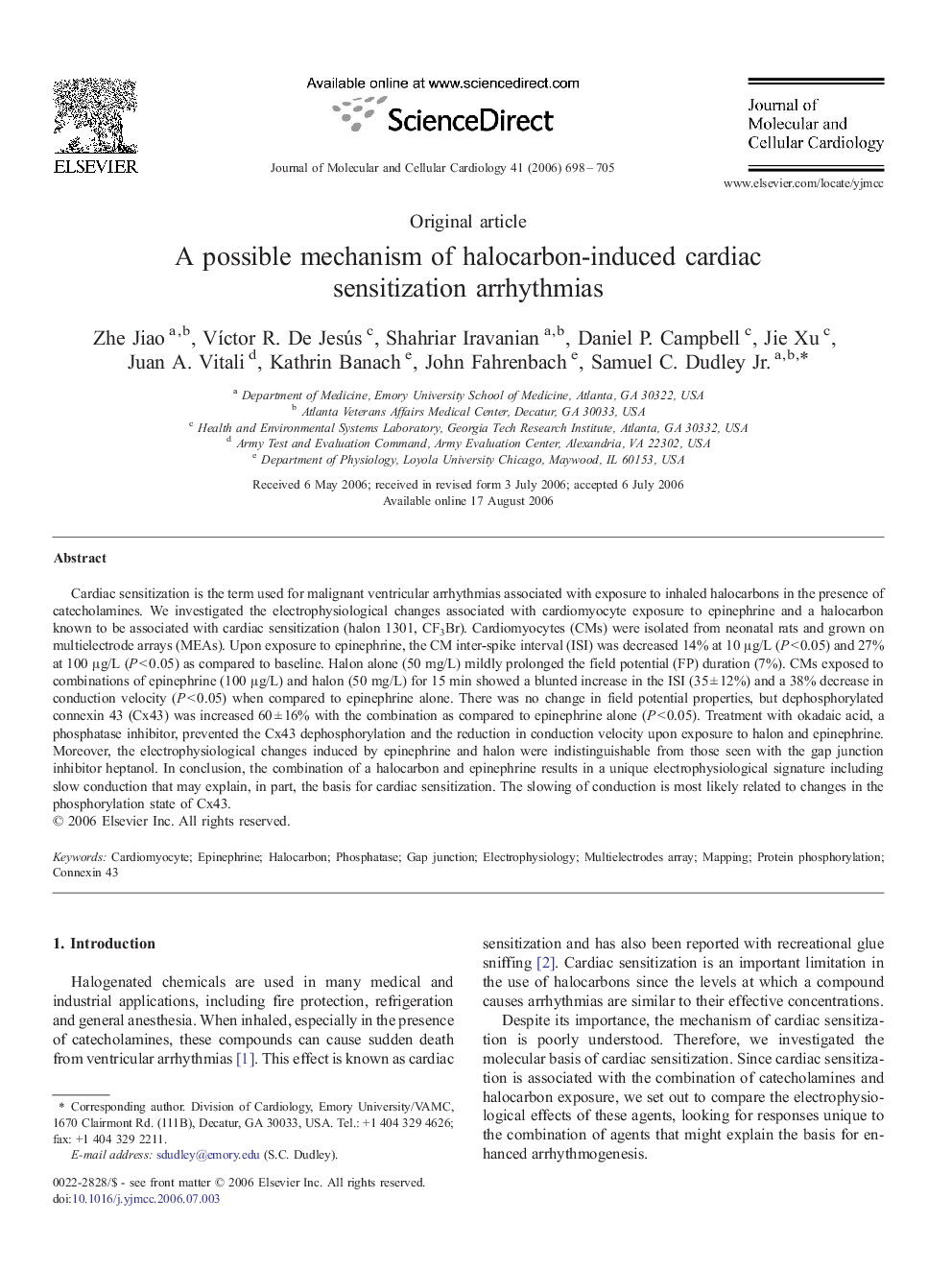| Article ID | Journal | Published Year | Pages | File Type |
|---|---|---|---|---|
| 2192356 | Journal of Molecular and Cellular Cardiology | 2006 | 8 Pages |
Abstract
Cardiac sensitization is the term used for malignant ventricular arrhythmias associated with exposure to inhaled halocarbons in the presence of catecholamines. We investigated the electrophysiological changes associated with cardiomyocyte exposure to epinephrine and a halocarbon known to be associated with cardiac sensitization (halon 1301, CF3Br). Cardiomyocytes (CMs) were isolated from neonatal rats and grown on multielectrode arrays (MEAs). Upon exposure to epinephrine, the CM inter-spike interval (ISI) was decreased 14% at 10 μg/L (P < 0.05) and 27% at 100 μg/L (P < 0.05) as compared to baseline. Halon alone (50 mg/L) mildly prolonged the field potential (FP) duration (7%). CMs exposed to combinations of epinephrine (100 μg/L) and halon (50 mg/L) for 15 min showed a blunted increase in the ISI (35 ± 12%) and a 38% decrease in conduction velocity (P < 0.05) when compared to epinephrine alone. There was no change in field potential properties, but dephosphorylated connexin 43 (Cx43) was increased 60 ± 16% with the combination as compared to epinephrine alone (P < 0.05). Treatment with okadaic acid, a phosphatase inhibitor, prevented the Cx43 dephosphorylation and the reduction in conduction velocity upon exposure to halon and epinephrine. Moreover, the electrophysiological changes induced by epinephrine and halon were indistinguishable from those seen with the gap junction inhibitor heptanol. In conclusion, the combination of a halocarbon and epinephrine results in a unique electrophysiological signature including slow conduction that may explain, in part, the basis for cardiac sensitization. The slowing of conduction is most likely related to changes in the phosphorylation state of Cx43.
Keywords
Related Topics
Life Sciences
Biochemistry, Genetics and Molecular Biology
Cell Biology
Authors
Zhe Jiao, VÃctor R. De Jesús, Shahriar Iravanian, Daniel P. Campbell, Jie Xu, Juan A. Vitali, Kathrin Banach, John Fahrenbach, Samuel C. Jr.,
